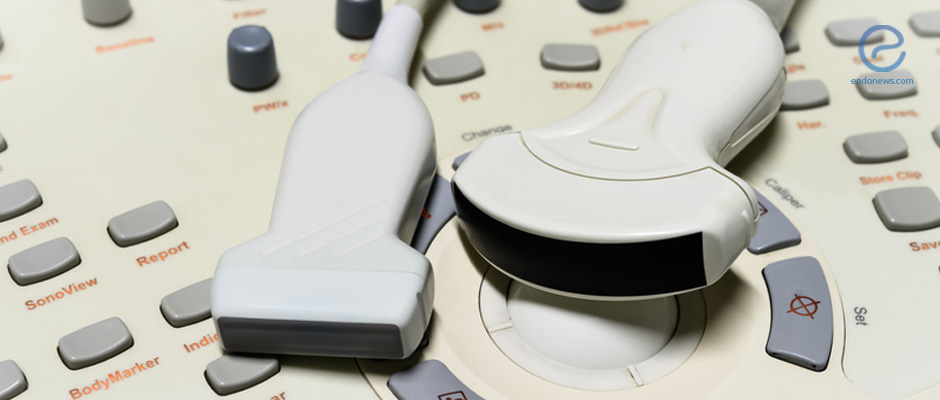Ultrasound-guided High-intensity Focused Ultrasound can Treat Abdominal Wall Endometriosis
Oct 19, 2017
Ultrasound-guided High-intensity Focused Ultrasound (USgHIFU) may be a safe method for Abdominal Wall Endometriosis.
Key Points
Highlights:
- This study by Luo et al. analyzed the effectiveness of using non-invasive ultrasound-guided high-intensity focused ultrasound (HIFU) in treating Abdominal Wall Endometriosis (AWE).
Importance:
- Women suffering from AWE often turn towards other forms of treatments that are not very effective or that are highly invasive. Thus there is a need for a safer more efficient therapy for the treatment of AWE.
What’s done here?
- Over the course of 4 years, 32 participants were recruited, and all of the participants had AWE. The also met the following criteria:
- They were of reproductive age.
- Their AWE lesion formed after uterine surgery.
- At the time of menstruation, there was pain localized at the abdominal wall scar tissue.
- All the women underwent an ultrasound/Magnetic resonance imaging (MRI) to determine the location and depth of the nodule within the scar in the abdominal wall incision.
- The HIFU treatment was conducted while the patient was conscious but sedated. This procedure was accompanied by ultrasound to locate the lesions of interest.
- The follow-up included ultrasound/MRI analysis of any physical changes in the nodules as well as changes in cyclic pain and blood flow of nodules up to 12 months.
- Statistical analysis was conducted on the data derived from the study.
Key results:
- All lesions were successfully ablated.
- Six months post-treatment, the lesion volume, and pain scores had decreased significantly.
- Average lesion volume before treatment was 2.80 cm cube; however, after treatment, it was significantly more prominent in HIFU group compared to the surgery group.
- Average pain score before treatment was 6.80 and after treatment was 1.80; and not significantly different between surgery or HIFU groups.
- Local edema, which is the fluid buildup that can adversely affect surrounding tissues, was only seen for 1-3 days after treatment.
- USgHIFU may be an acceptable tool for AWE.
Limitations of the study:
-
It is a retrospective observational study.
-
The number of subjects is small, and the follow-up time was short.
- There is no histopathological diagnosis for HIFU group, severely decreasing the reliability of the study. There may be doubts about the diagnosis of the lesion treated, and also the remaining nodule fate; as the surgical treatment removes all the lesion with a significant difference in size.
Lay Summary
Endometriosis is a painful and complicated disease that can manifest in various ways. One particular way is Abdominal Wall Endometriosis (AWE), which usually arises from surgery. As is true for other types of endometriosis, there has yet to be a cure for AWE. Luo et al. seek to change the status quo by finding a safe and effective treatment option for AWE. They recently published a paper titled “Ultrasound-guided high-intensity focused ultrasound treatment for abdominal wall endometriosis: a retrospective study,” in BJOG where they identified ultrasound-guided high-intensity focused ultrasound (USgHIFU), a non-invasive procedure, as a potential treatment option for AWE.
The retrospective study was conducted in one department in China, and the participants consisted of 32 patients with AWE. Each participant was treated with HIFU, and the patient was asked about symptom relief and adverse symptoms after the treatment. Contrast-enhanced ultrasounds were also used to see changes in the lesion. The data from the study was subject to statistical analysis.
The results showed that HIFU decreased the size of AWE lesions and the lowered the pain scores. The authors reported that the ablation treatment was successful because the non-perfused volume right after treatment was 0.9 – 2.3 cm cube, whereas the fractional ablation was 87%-100%. Local edema, which refers to fluid build up that can affect surrounding tissues, was seen for 1-3 days after treatment, other than that there were no severe complications from the procedure.
However, the retrospective observational nature of the study, the small number of subjects and the short follow-up time along with the absence of histopathological diagnosis for HIFU group, are significant criticisms of the study. While the surgical treatment removed all the lesion through surgery and diagnosed as endometriosis; the tissue diagnosis, along with malignancy criteria and the long-term fate of the remaining nodule in HIFU treatment remains an important issue.
Research Source: https://www.ncbi.nlm.nih.gov/pubmed/28856859
Abdominal Wall Endometriosis Ultrasound ultrasound-guided high-intensity focused ultrasound MRI lesions

